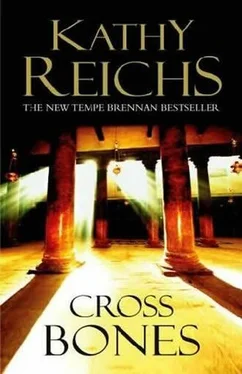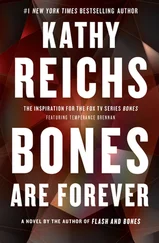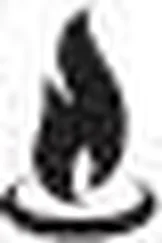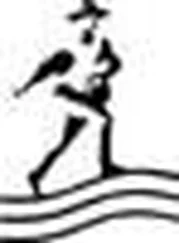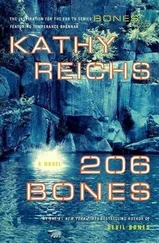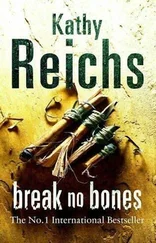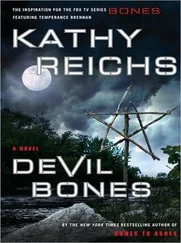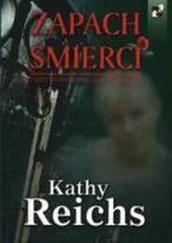After much security, and manyshalom s, I was directed to the basement. The keeper of the archives was a woman of about forty, with a pale mustache, and dried makeup around the corners of her mouth. Her hair was fried blonde and dark for an inch out from her scalp.
“Shalom.”
“Shalom.”
“I’m told you keep old articles on file by topic.”
“Yes.”
“Is there a Masada dossier?”
“There is.”
“I’d like to view it, please.”
“Today?” Her tone suggested she’d rather release files to kindergarteners with finger paints.
“Yes, please.”
“My staff is primarily here to get the archives online.”
“That is such overwhelming work.” My shoulders sagged in sympathy. “But so valuable.”
“We’ve got materials going back to the days when the paper was the Palestinian Post. ”
“I understand.” I smiled my warmest greeter-at-the-Wal-Mart smile. “And I’m in no hurry.”
“You can’t check it out.”
“Of course not.” I looked appropriately horrified.
“Do you have two pieces of identification?”
I showed my passport and my UNCC faculty ID. She looked at both.
“Are you researching a book?”
“Mm.”
She pointed to one of several long wooden tables. “Wait there.”
Rounding her counter, Madam Archivist crossed to a bank of gray metal filing cabinets, opened one drawer, and removed a bulky file folder. Placing the file on my table, she almost smiled.
“Take your time, dear.”
The clippings had been glued onto blank pages. Scores of them. A date had been written to the side of each article, and, on many, the word “ Masada ” had been circled within the headline or the text.
By noon, I’d learned three important things.
First, Jake was not exaggerating. Save for brief mention at a press conference following the second season’s excavation, the cave finds were never reported by the media. The Jerusalem Post even ran a special “Masada Section” in November of ’64. In it Yadin described all the sensational finds from the first season, mosaics, scrolls, the synagogue, themikvehs, the palace skeletons. Not a word on the cave bones.
Second, Yadin knew about the pig bones. A March ’69 article quoted him as saying that animal bones, including those of pigs, were found among the various human remains at Masada.
Elsewhere, Yadin stated that officials from the Religious Affairs Ministry had suggested pigs might have been brought up to Masada to help with garbage disposal. Apparently, that was done in the Warsaw ghetto in the forties.
I couldn’t see it. If the zealots had a garbage problem, they’d have chucked it over the side and let the Romans deal.
And Yadin didn’t back off from the statement he made in ’69. In an ’81 interview he told aPost reporter that he’d advised Chief Rabbi Yehuda Unterman in ’69 that he couldn’t vouch for the Cave 2001 remains being Jewish, since they were commingled with pig bones.
Third, Yadin asserted that radiocarbon tests were never done on the cave remains. In the same ’81 interview in which he’d discussed the pig bones, he stated that carbon-fourteen dating wasn’t requested, and that it was not his business to do so. An anthropologist put it off to high cost. That was the interview Jake had remembered.
I sat back, considering.
Obviously, Yadin doubted the cave folks were Jewish zealots. Yet he never sent samples for radiocarbon dating.
Why not? The test wasn’t that expensive. What did Yadin suspect? Or know? Did he or one of his staff figure out the identity of the cave burials? Of Max?
I began sliding pages back into the file.
Ordid Yadin or one of his staff send samples for radiocarbon testing? Could someone have used a request for radiocarbon testing or some other type of analysis as a cover to get troublesome evidence out of the country?
Troublesome evidence like Max?
Could someone have sent Max to Paris to hide him? To make him disappear?
I knew my next stop.
As on my first visit, I was struck by how similar Mount Scopus is to other university campuses. On Sunday afternoon, the grounds were deader than Kokomo.
But legal parking was still as likely as an audience with the pope.
Leaving the Tempo in the same spot in which Jake had wedged the Honda, I hurried straight to the library. After passing security, I asked for the periodical section, located the journalRadiocarbon, and pulled every volume published in the early sixties.
Exiting the stacks, I found a carrel, and began searching, issue by issue.
It took less than an hour.
I sat back, staring at my notes, a star pupil with a breakthrough, and not a clue what it meant.
Reshelving the journals, I bolted.
It took Jake an eternity to open his gate. His eyes were at half-mast, and creases made a road map of his left cheek.
I trailed Jake to his flat, tingling with the excitement of discovery. He went straight to the kitchen. I was bursting as he filled a kettle and set it to boil.
“Tea?”
“Yes, yes. You’re familiar with the journalRadiocarbon?”
Jake nodded.
“I did a quick check at the university library. Between sixty-one and sixty-three Yadin sent materials from his excavation of the Bar Kochba site here in Israel to the lab at Cambridge.”
“Which site?”
“The Bar Kochba caves near the Dead Sea? Failed Jewish rebellion against the Romans? Second centuryC. E.? But the specific site isn’t important.”
“Uh-huh.” Jake dropped tea bags into mugs.
“My point is Yadin sent materials from his dig at Bar Kochba for radiocarbon dating.”
“Uh-huh.”
“Are you listening to me?”
“I’m riveted.”
“I’ve also been through the Masada folder in theJerusalem Post archives.”
“Busy, busy.”
“In an eighty-one interview, Yadin told aPost reporter that it was not his business to initiate radiocarbon testing.”
“So?”
“Yadin contradicted himself.”
Jake raised a hand to cover a belch.
“Yadin always insisted that nothing from Masada had been sent for carbon-fourteen dating, right?”
“Far as I know.”
“But Yadindid send materials off from other sites. And it wasn’t just Yadin at Bar Kochba. During that same period other Israeli archaeologists were using other labs. The U.S. Geological Survey lab in Washington, D.C., for example.”
“Cream or sugar?”
“Cream.” I was fighting the urge to shake Jake into consciousness. “You said that back in the sixties some member of the Knesset insisted skeletons from Masada had been sent abroad.”
“Shlomo Lorinez.”
“Don’t you see? Lorinez may have been right. Some of the Cave 2001 bones may very well have been shipped out of Israel.”
Jake filled both mugs and handed me one.
“The articulated skeleton?”
“Exactly.”
“But it’s just speculation.”
“In his memo Haas reported a total of two hundred and twenty bones, right?”
Jake nodded.
“A normal adult human skeleton has two hundred and six bones. So Haas’s count couldn’t have included Max.”
“Who’s Max?”
“ Masada Max. The articulated skeleton.”
“Why Max?”
“Ryan likes alliteration.”
Jake flicked a bushy brow, but made no comment.
“Obviously Haas never saw that skeleton,” I said. “Why not?”
Jake stopped dipping his tea bag. “Because it was sent to the Musée de l’Homme in Paris?”
“Welcome to the land of the living, Jake.”
“Nice alliteration.”
“But why keep it secret?” I asked.
I didn’t wait for an answer.
“And why the Musée de l’Homme? They don’t do radiocarbon testing. And why a complete skeleton? You need only a small bone sample. And why single out that one skeleton? Yadin never talked about it. Haas never saw it.”
Читать дальше
